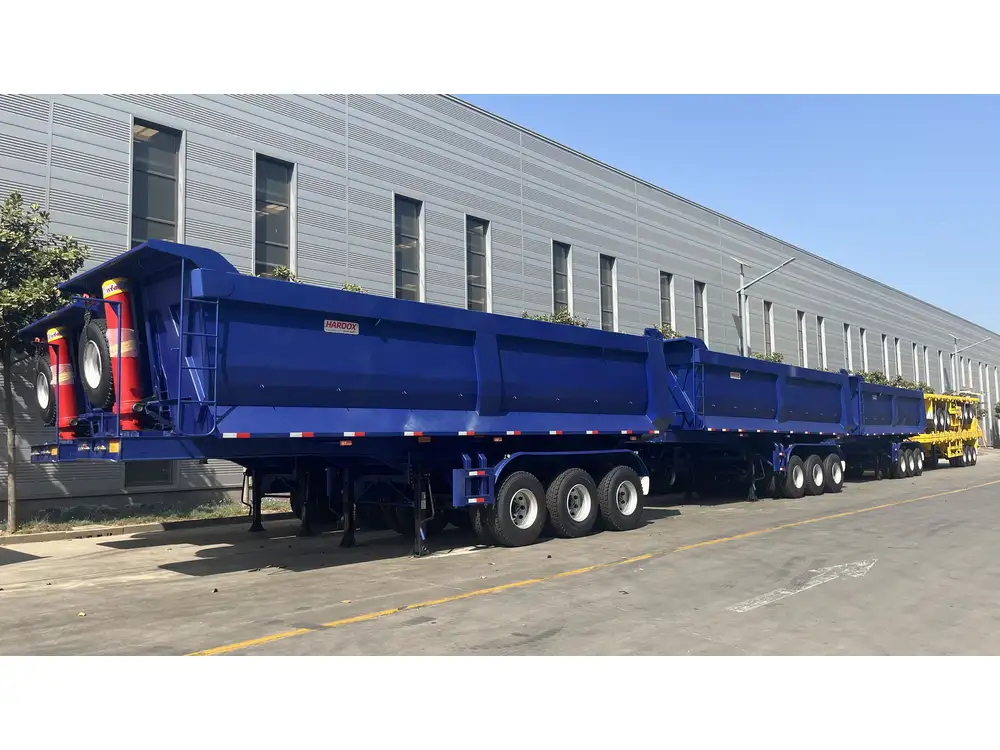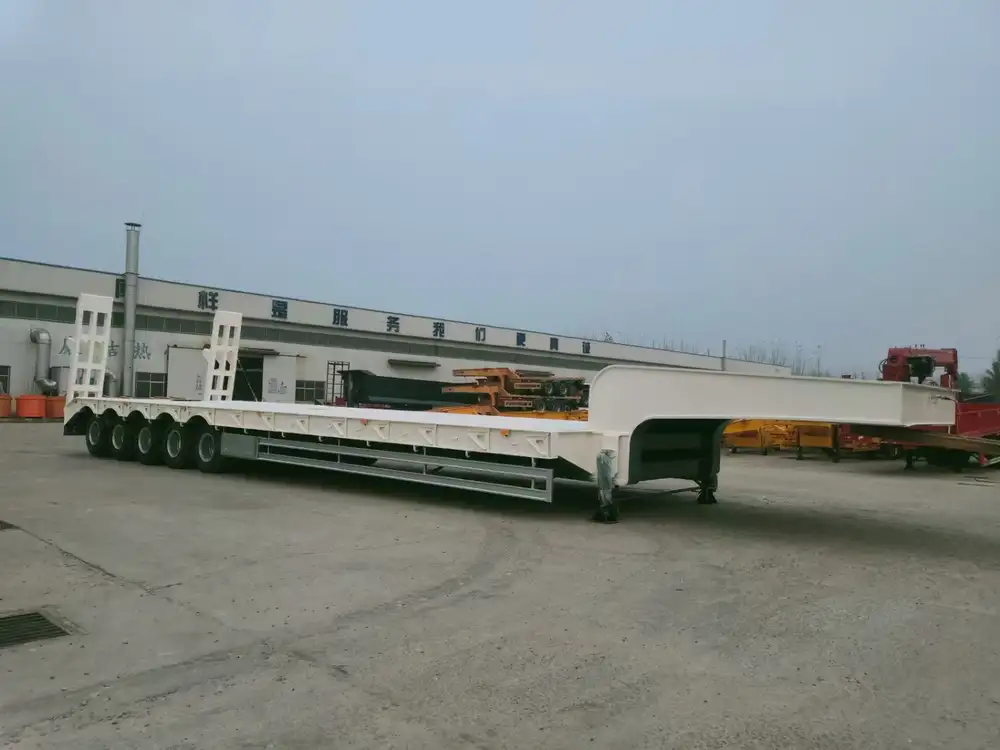When it comes to transportation, particularly in the freight and logistics sectors, the efficiency of load management can make a significant difference. One of the paramount considerations for manufacturers, logistics managers, and truck drivers alike is determining how much cargo they can effectively load into a semi-trailer. This inquiry extends beyond simply knowing the dimensions—it encompasses understanding weight limits, optimizing space, and adhering to industry regulations.
1. Load Capacity Fundamentals
1.1 Types of Weight Limits
To grasp how much you can pack into a semi-trailer, one must first navigate the convoluted framework of weight limits defined by various governing bodies. These limits are typically categorized into two primary components:
| Weight Component | Description |
|---|---|
| Gross Vehicle Weight Rating (GVWR) | The maximum total weight a vehicle is rated to safely handle, including the truck, trailer, cargo, and any passengers. |
| Net Payload Capacity | The maximum amount of weight that can be loaded into the trailer, excluding the weight of the trailer itself. |
Knowing these parameters can significantly influence your loading strategy. For example, a standard semi-trailer can carry a GVWR of up to 80,000 pounds, while the net payload capacity may vary depending on the trailer’s weight.

1.2 Dimension Considerations
A deeper understanding of the physical dimensions of the trailer is equally imperative. A standard 53-foot semi-trailer has the following common dimensions:
- Length: 53 feet
- Width: 8.5 feet
- Height: 13.5 feet
Estimating volume, the cubic capacity of a standard semi-trailer is roughly 3,800 to 4,000 cubic feet. However, actual loading capacity also hinges on how commodities are packaged and arranged.
2. Cargo Types and Their Implications
2.1 General Freight
General freight encompasses a wide array of packages, typically confined to boxes or crates. These can often be stacked to optimize space usage, creating significant efficiency during transportation.

2.2 Specialized Cargo
Specialized cargo, such as liquids, perishables, and oversized items, can dramatically alter the amount packable within a trailer. Each category mandates specific loading techniques and safety considerations:
| Cargo Type | Considerations |
|---|---|
| Liquid | Requires tankers or specialized containers that limit the quantity per trailer due to safety regulations. |
| Perishables | Often need refrigeration, limiting the space that can be utilized for other types of goods. |
| Oversized | May necessitate special permits and routes, possibly affecting load distribution and overall capacity. |
3. Calculating Load Capacity
3.1 Determining Space Efficiency
To grasp how you can maximize the physical space within a semi-trailer, consider using the following formula:
[ \text{Total Volume} = \text{Length} \times \text{Width} \times \text{Height} ]For a standard trailer of 53 feet:
[ 53 \text{ ft} \times 8.5 \text{ ft} \times 13.5 \text{ ft} = 6,317.75 \text{ cubic feet} ]This formula provides a foundational understanding, but practical constraints often limit the effective use of that space. An important consideration includes freight stacking patterns and the types of pallets utilized.

3.2 Weight Distribution Regulations
Ensuring proper weight distribution across the trailer is not merely a suggestion; it’s a legal requirement in many jurisdictions. Compliance with laws such as the Bridge Formula ensures that weight restrictions are adhered to across axles, mitigating risks while on the road.
For example, the Bridge Formula is articulated as:
[ W = \frac{LN}{N-1} + 12N + 36 ]Where:
- (W) = Maximum weight in pounds carried on a group of two or more axles.
- (L) = Distance in feet between the outer axles of any two or more consecutive axles.
- (N) = Number of axles in the group under consideration.
This mathematical model combines space and weight factors, ensuring that not only is your trailer loaded to full capacity, but it’s also compliant with safety regulations.
4. Effective Loading Techniques
4.1 Palletization
Utilizing pallets to stack goods effectively can enhance load efficiency. The following common pallet dimensions can be referenced:
| Pallet Size | Standard Weight Capacity | Typical Load Volume |
|---|---|---|
| 48″ x 40″ (GMA) | Up to 3,000 lbs | Approx. 200 – 250 cu. ft. |
| 42″ x 42″ (Square) | Up to 2,500 lbs | Approx. 175 – 230 cu. ft. |
| 48″ x 48″ (Square) | Up to 2,000 lbs | Approx. 175 – 250 cu. ft. |
By understanding which pallet configurations work best with your trailer, you ensure a strategic approach to loading.

4.2 Load Securing Techniques
Properly securing your loads is vital to comply with safety regulations and to prevent potential damage. The use of straps, nets, and barriers is vital. Regulations stipulate the need for securing loads in such a manner that they do not shift during transport.
A well-secured load not only influences legality but also ensures safety, reducing liability concerns associated with cargo loss or spillage.
5. Common Mistakes to Avoid
5.1 Overloading
One of the most prevalent errors in freight management is overloading the semi-trailer. This practice not only violates regulatory limits but also heightens risks associated with braking and handling during transport.

5.2 Ignoring Load Dimensions
Disregarding the specific dimensions of trailer space is another common pitfall. Without considering height, width, and the configuration of your products, you risk maximizing load inefficiency.
5.3 Failure to Consider Route Restrictions
Insufficient attention to route restrictions based on load type can lead to delays and unnecessary complications. Always evaluate whether the intended route has restrictions related to weight or load type to avoid hassle during transit.
6. Regulatory Compliance and Best Practices

6.1 Regular Training
For those involved in logistics, adhering to best practices includes engaging in regular training sessions about loading techniques, weight regulations, and safety protocols.
6.2 Documentation
Maintaining thorough documentation relating to load specifications, weight limits, and operational procedures is crucial. This not only enhances safety but also smooths the path for adherence to regulatory requirements.
6.3 Utilizing Technology
Leverage software tools that assist in load planning and weight distribution calculations. Many applications are specifically designed for the trucking industry to optimize routes and loading processes efficiently.

Conclusion: Maximizing Your Semi-Trailer Load Capacity
Understanding how much you can effectively pack into a semi-trailer is a pivotal aspect of logistics and freight management. From comprehending weight limits to optimizing your loading techniques, each consideration plays a crucial role in ensuring a successful transport operation.
By following best practices, staying in tune with regulatory requirements, and employing technology, you can enhance your loading efficiency, reduce costs, and ultimately drive more sustainable business operations. Arm yourself with this knowledge, and take your freight logistics to new heights.



